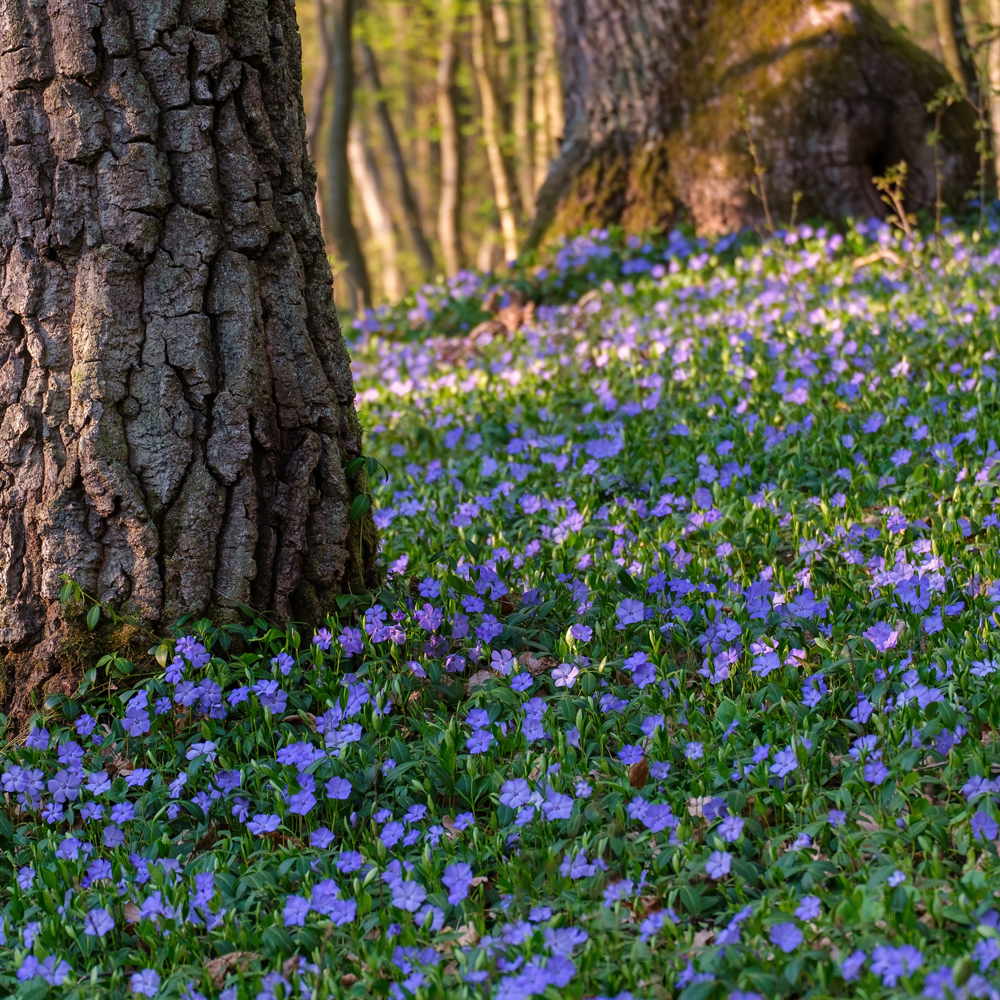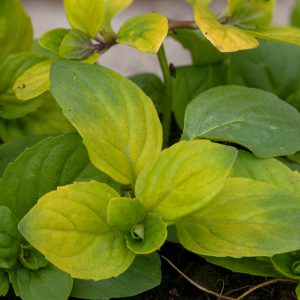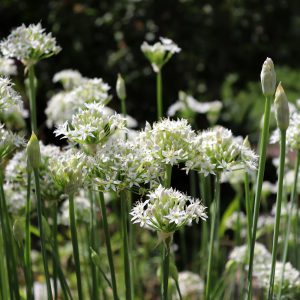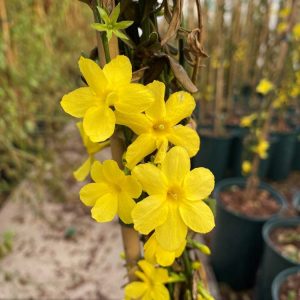Description
Vinca minor, also known as common periwinkle or myrtle, is a popular evergreen groundcover plant that is native to Europe and western Asia. This low-growing plant features glossy, dark green leaves and produces attractive blue-purple flowers from late spring through early fall. Vinca minor is known for its ability to spread and quickly fill in bare areas of the garden, making it a great choice for erosion control or as a low-maintenance option for difficult areas. It is also a popular choice for planting under trees and in shady areas. Vinca minor prefers well-draining soil and can tolerate a range of conditions, including full sun to partial shade.
Key Facts
- Common Name(s):Periwinkle
- Hardiness:Fully hardy
- How big will I get? Vinca minor can grow to a height of 0.1m and a spread of 1.2m.
- Did You Know That:Periwinkle comes from the Latin pervinca which translates as thoroughly bind?
Plant Calendar
A rough guide to how this plant will change through the year.
| Jan | Feb | Mar | Apr | May | June | July | Aug | Sept | Oct | Nov | Dec | |
| Flowering Time |  |
 |
 |
 |
 |
 |
||||||
| Foliage Colour |  |
 |
 |
 |
 |
 |
 |
 |
 |
 |
 |
 |
| J | F | M | A | M | J | J | A | S | O | N | D |
 |
 |
 |
 |
 |
 |
||||||
 |
 |
 |
 |
 |
 |
 |
 |
 |
 |
 |
 |
Care Guide

Soil Requirements
Vinca minor thrives in wet or damp soil with decent drainage or in poorly draining soil. This plant can grow in soil with a wide range of pH levels, it is not picky about the pH level of the soil.

Best Position
Vinca minor can handle either an exposed or a sheltered position and is a very versatile plant that can cope with full shade, partial shade, or full sun.

Maintenance
Vinca minor will benefit from pruning in Spring. Shrubs that produce their flowers in mid to late Summer or Autumn, typically flower on new growth, so by reducing the shrub in Spring you encourage lots of new, flower producing growth.

Pest, Diseases and Wildlife
Vinca minor can have problems with aphids, it can be vulnerable to certain diseases such as rust. It is also known to attract bees. It is toxic to cats, dogs and horses.





